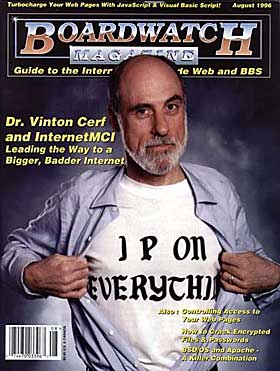In this month’s issue of Electronic Products (and, truth be told, in many issues this past 12 or more months), you’ll find several references to the Internet of Things, or IoT. For instance, what seems to me to be one of the more interesting symposia at the Sensors Expo show, Making the Internet of Things a Reality: A Toolkit for Designing “Smart,” is discussed in the Outlook section of this issue.
The IoT acronym has largely taken the place of MTM (Machine to Machine) as a way of describing technology that makes possible the direct, intelligent interaction among electronics and electromechanical systems without human intervention. Unlike MTM, what the term IoT recognizes is the key role of the Internet in making the interaction occur. In his blog, Eliot Lear’s Ramblings , Lear — the Principle Engineer and self-described “unofficial Corporate Irritant” at Cisco — states that the Internet Protocol (IP) is “the only common protocol above which and below which all other protocols sit.” Thus it is the thing that allows all kinds of systems to talk with each other, which indeed is what the name implies.
While the term IoT may be of recent origin, its fundamental concept is not. Back at a meeting of the Internet Engineering Task force in 1992, during a heated debate about the role of various network elements, Internet co-creator Vinton G. Cerf famously ripped open his dress shirt to unveil a tee-shirt emblazoned with the words “IP ON EVERYTHING.” (The moment was immortalized on a cover of the now-defunct Boardwatch magazine.)
 [Photo use courtesy of Light Reading (www.lightreading.com)]
[Photo use courtesy of Light Reading (www.lightreading.com)]
I had the good fortune to spend some time with Vint during a series of roundtables in the 1990s, and his ideas about interconnection were way ahead of their time. He talked about “The Internet Light Bulb,” whose status could be determined and luminance controlled remotely, as just one of the things IP could make happen. Futurist that he is — he actually served as a technical advisor for, and appeared in, the TV series Gene Roddenberry’s Earth: Final Conflict — he has foreseen how IP could form the basis for interplanetary communication, and is working with NASA’s JPL to realize the InterPlaNet.
Since Cerf first espoused IP on everything, several things have happened to make IoT globally feasible. First, widespread availability of miniature RF transceivers and the access to a great deal of spectrum have made wireless transmission common; not having to run wires to interconnect everything means that systems can be implemented quickly and inexpensively. And the plethora of tiny inexpensive sensors available today means that we can gather all kinds of information practically anywhere.
Vaudevillian and radio/movie star Eddie Cantor is said to have once remarked, “It takes twenty years to make an overnight success.” Now it’s finally time for IoT to become one.
Advertisement





